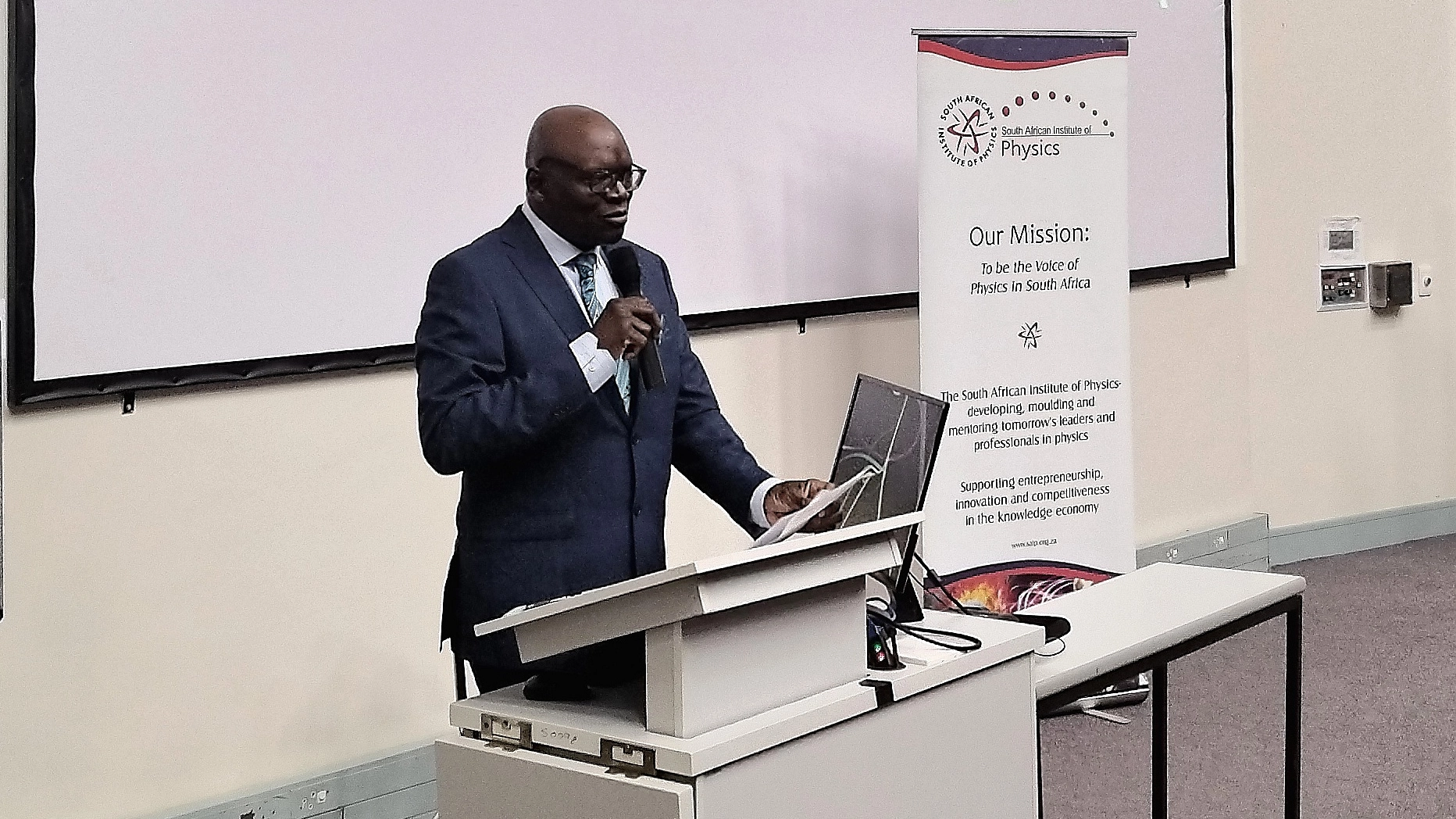
By Dr Kate Bryan
In a shared plenary session at the 68th conference of the South African Institute of Physics (SAIP), Head of Rhodes University’s Department of Physics and Electronics Professor Makaiko Chithambo and Visiting Adjunct Professor in Flow Physics at the University of the Witwatersrand Professor Igle Gledhill speculated on what might be accomplished by the year 2124. The talk served as an intellectual time capsule for future physicists to look over and “possibly laugh at our ignorance” as Professor Chithambo joked.
Professor Chithambo, who is also Chairman of SAIP’s 2024 Local Organising Committee, began by pointing out the importance of recognising where we had come from and the legacy of organisations such as the SAIP, stating that they are “not just about physics; they guide policy direction”. The collection of research areas that fall under the umbrella of ‘physics’ is diverse. As a result, there are many places where physics can be applied to problems that affect many South Africans.
Professor Chithambo highlighted such an example by pulling up the famous ‘Pale Blue Dot’ image, captured by the Voyager 1 space probe, in which the Earth is visible as a tiny speck, bathed in a beam of sunlight. So little of the radiant energy from the sun is used, yet more than enough is available, and so the prediction was made that by 2124 the energy from the sun would be more effectively captured and efficiently used.
Professor Chithambo went on to discuss the point defect; specifically the extent to which the influence of a seemingly singular defect can be sensed over much longer ranges and thereby modify the properties of a material in ways not often thought possible.
The current tools available have done well to describe the key features of materials, but the finer details are often lost or misinterpreted as noise. “Our physics is insufficient”, as Professor Chithambo put it, explaining that the exploration of these finer details will push the boundaries into new techniques and understanding, and predicting that by 2124, point defects description will expand to include one million neighbouring particles.
The study of point defects, or imperfections, has ramifications for industry. Our current technological growth is based on the imperfections in semiconductors, making an understanding of them pivotal in pioneering advances for computer chip manufacturing. Professor Chithambo went on to speculate that further application for this research may be in the construction of quantum computers, before concluding with a final prediction: 2124 will see a market for household quantum computers.
Professor Gledhill’s talk started with a reminder that it is typical for physics to take the long view as, in some cases, “experiments are planned half a century in advance”. This speaks to the forward-thinking attitude that will no doubt lead to growth in understanding across topics in physics, and Professor Gledhill leapt straight in with a prediction that the discovery of a fourth neutrino would result from such advancements by 2124.
Keeping in the realm of the subatomic, the next prediction offered was for the discovery of a dark matter particle, which would shed some much-needed light on the missing mass of the universe. This launched the talk into the arena of astronomy as Professor Gledhill speculated that data from the Square Kilometre Array (SKA) may be the key to helping with our understanding of dark energy and the expansion of space. The development of space travel capabilities also means we can begin to develop ‘tactile astronomy’, another prediction for 2124, whereby a planet like Mars could be studied by a person standing on its surface, and astronomers could routinely hold pieces of the celestial bodies they were studying.
Bringing the predictions back down to Earth, Professor Gledhill turned to computing, predicting that the final connections would be made and the global network complete, ensuring access to information. This would aid more advanced computer analysis, particularly of dynamic systems. Further, by lowering data costs and making internet access universal, real-time (and validated) data will be available for the study of complex weather systems, including unique areas of study such as the African thunderstorm.
The continued research into energy sources encouraged Professor Gledhill to predict that the carbon emission problem will be resolved by 2124 and, further, fusion energy might be successfully implemented. In tandem with advances in technology, such as a new energy source, is the question of how it could be equitably distributed to improve as many lives as possible. On this note, Professor Gledhill concluded the talk with an appeal that all advancements in knowledge be utilised and shared in a manner that ensures “to keep the honesty and integrity of science”.
